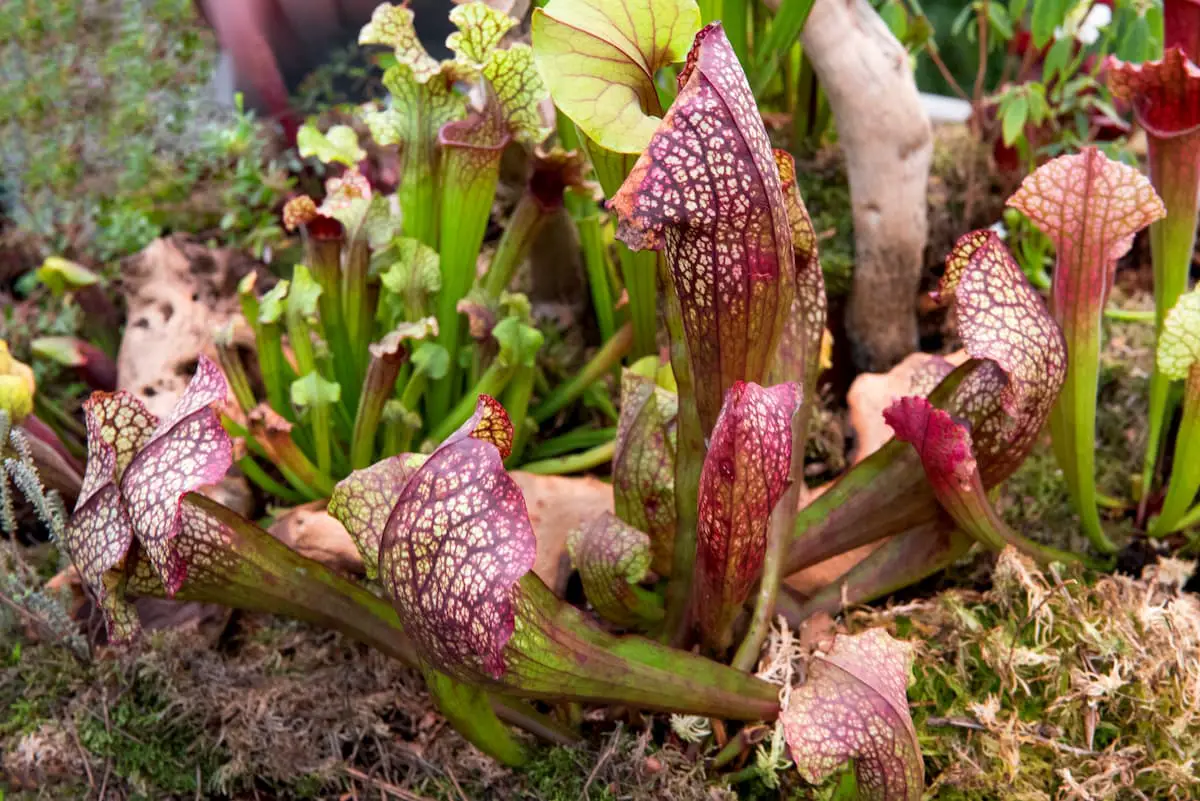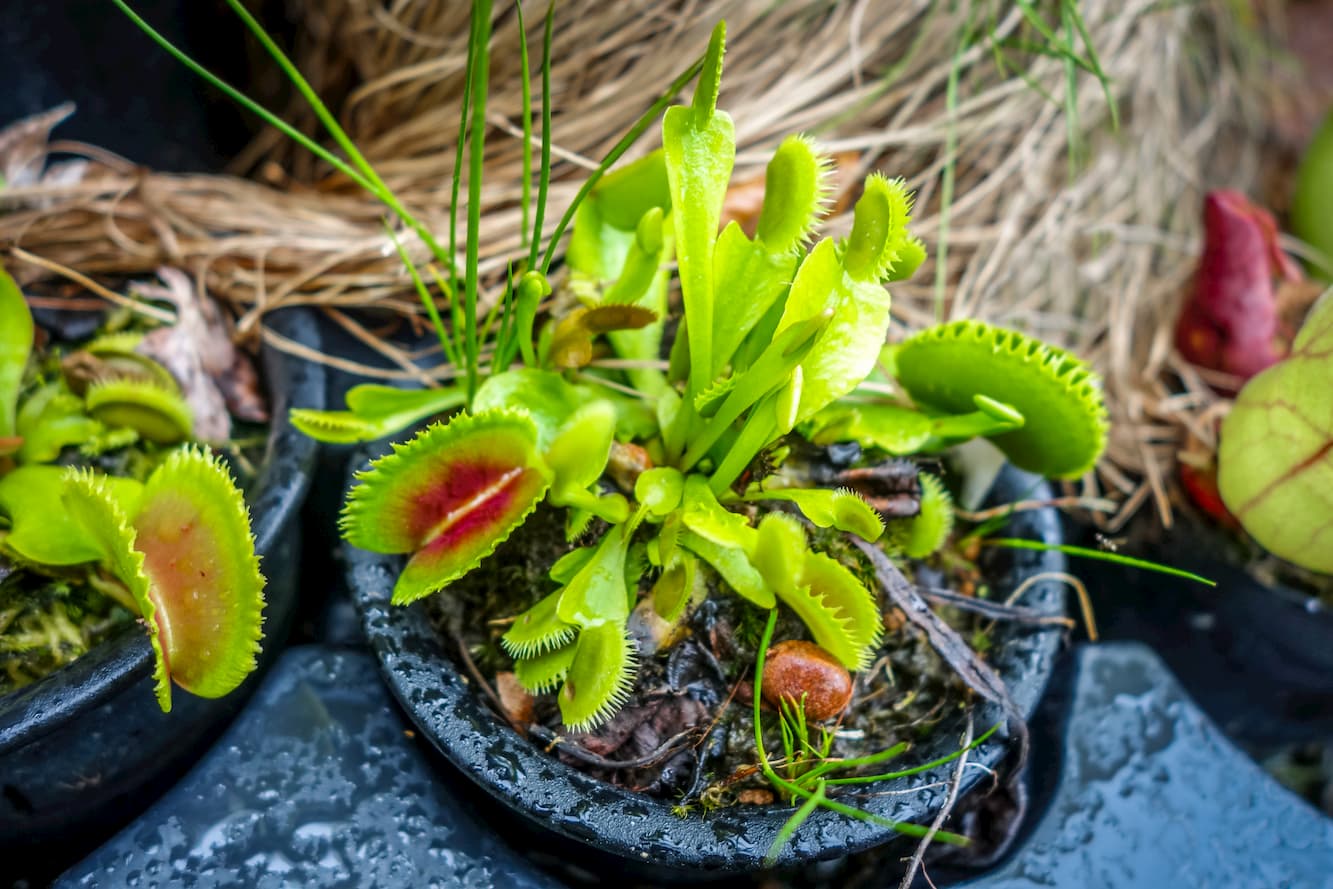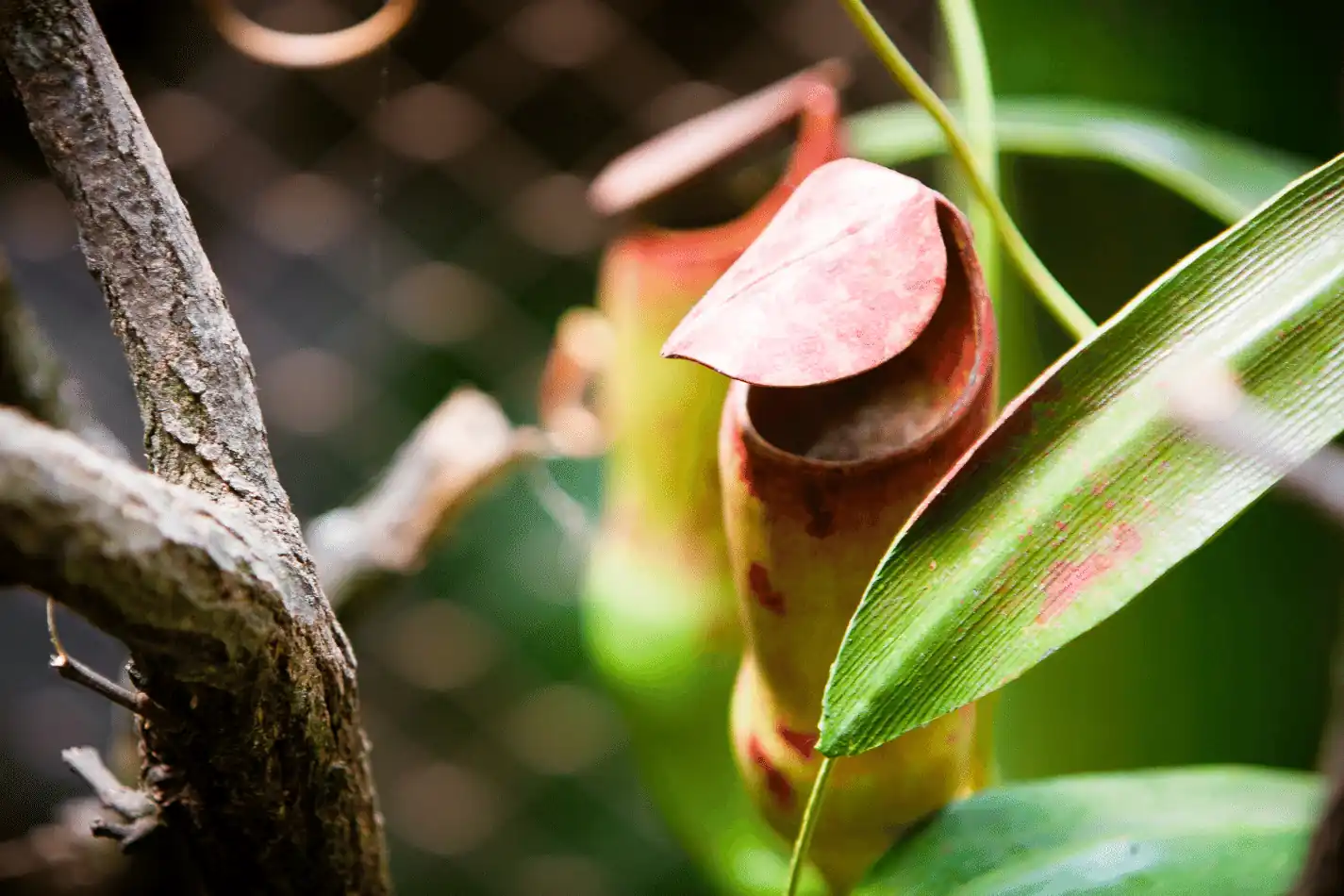Imagine stepping into a world where plants possess a mysterious allure, drawing in unsuspecting insects with their captivating beauty.
As you begin to unravel the secrets of pitcher plants, you’ll be intrigued by their intricate design and the clever mechanisms they employ for survival.
But what lies beneath the surface of these botanical wonders remains a puzzle waiting to be solved, offering a glimpse into the fascinating world of nature’s deception and ingenuity.
Key Takeaways
- Pitcher plants have intricate anatomy and mechanisms for capturing prey.
- Various species like Nepenthes rajah and Sarracenia purpurea exhibit unique adaptations.
- Pitcher plants use specialized hairs, digestive enzymes, and sweet nectar for prey capture.
- Mimic natural conditions with bright light, high humidity, and acidic soil for healthy pitcher plants.
Anatomy of Pitcher Plants
Explore the intricate anatomy of pitcher plants to uncover their fascinating mechanisms for capturing prey.
With its alluring scent and vibrant colors, the pitcher plant beckons insects to their demise. As you delve into its structure, you’ll discover the hood that acts as a slippery slide for unsuspecting visitors.
Imagine being a tiny insect, lured by the sweet nectar, only to find yourself slipping into the depths of the plant’s digestive fluids.
Within the pitcher plant, specialized hairs point downward, making escape nearly impossible.
Envision the horror of being trapped in this botanical trap, surrounded by enzymes that slowly break down your exoskeleton. The plant’s adaptation to nutrient-poor environments is both astonishing and terrifying.
Take a moment to appreciate the intricate design of these carnivorous wonders. Their anatomy serves a vital purpose in the circle of life, reminding us of nature’s beauty and complexity.
Join the ranks of enthusiasts who marvel at the mysterious world of pitcher plants and feel a sense of belonging among those who appreciate the wonders of the natural world.
Types of Pitcher Plant Species
Delve into the diverse world of pitcher plants by exploring the various species that showcase unique adaptations for capturing prey.
Pitcher plants come in a variety of types, each with its own special characteristics that make them stand out in the botanical realm.
For instance, the Nepenthes rajah, also known as the giant pitcher plant, boasts the title of the largest pitcher plant species, with pitchers that can hold up to three liters of fluid.
On the other hand, the Sarracenia purpurea, or purple pitcher plant, displays a vibrant hue that adds a pop of color to its surrounding environment.
If you’re looking for something more exotic, the Heliamphora nutans, or marsh pitcher plant, thrives in high-altitude regions such as the tepuis of South America.
With over 150 species of pitcher plants to choose from, each with its own unique charm, you’re sure to find one that captures your interest and adds a touch of wonder to your botanical collection.
Unique Adaptations for Prey Capture
Discover how pitcher plants employ specialized mechanisms for capturing prey in their unique pitchers. These fascinating plants have evolved incredible adaptations to attract, trap, and digest their unsuspecting prey.
The slippery inner walls of the pitcher plant, combined with downward-pointing hairs, create a treacherous surface that insects struggle to climb.
Once insects slip and fall into the pitcher, they become trapped in a pool of digestive enzymes, slowly breaking down to provide essential nutrients for the plant’s survival. Some pitcher plants even have evolved to produce sweet nectar or colorful patterns to lure insects into their deadly traps.
Pitcher plants demonstrate an amazing ability to adapt to their environment by developing various shapes and sizes of pitchers to capture different types of prey effectively.
From small, delicate pitchers that target tiny insects to large, robust pitchers that can trap even larger prey like frogs or rodents, these plants showcase a remarkable range of predatory strategies.
Growing Conditions and Environment
You need to understand the ideal growing conditions and natural habitat requirements for pitcher plants to thrive. These plants have specific needs that must be met for them to grow healthy and strong.
Ideal Growing Conditions
To cultivate healthy pitcher plants, it is vital to provide them with the ideal growing conditions that mimic their natural environment.
These incredible plants thrive best when given the right care. Here are some key elements to consider when creating the perfect environment for your pitcher plants:
| Light | Water | Humidity |
|---|---|---|
| Bright, indirect light | Keep soil moist, not waterlogged | High humidity levels |
Natural Habitat Requirements
Exploring the natural habitat requirements of pitcher plants reveals the crucial factors essential for their optimal growth and development.
Pitcher plants thrive in wet, acidic soils with good drainage. They require ample sunlight to flourish, making open areas like bogs, marshes, and wetlands ideal habitats.
These plants also benefit from high humidity levels, mimicking their native tropical environments. Consistent access to water is vital for pitcher plants, as they rely on their unique pitcher-shaped leaves to trap and digest insects for nutrients.
In their natural habitats, pitcher plants have adapted to nutrient-poor soils by evolving this carnivorous behavior. Understanding and replicating these natural conditions are key to successfully cultivating pitcher plants and observing their fascinating adaptations up close.
Watering and Feeding Requirements
When caring for pitcher plants, it’s essential to understand their specific watering and feeding requirements.
Pitcher plants thrive in a moist environment, so make sure to keep their soil consistently damp but not waterlogged.
Water them regularly, ensuring the soil doesn’t dry out completely, especially during the growing season. A good rule of thumb is to water them when the top inch of soil feels slightly dry to the touch.
Feeding pitcher plants is where they truly shine. They’re carnivorous plants that supplement their nutrient intake by trapping insects in their pitcher-shaped leaves.
To help them thrive, you can provide them with live insects like flies or crickets. Alternatively, you can use a diluted insectivorous plant fertilizer to mimic the nutrients they’d naturally get from insects.
Be cautious not to overfeed them, as this can lead to rotting of the trapped prey inside the pitchers.
Common Pests and Diseases
Dealing with common pests and diseases can challenge the health of your pitcher plants. It’s crucial to keep an eye out for invaders like aphids, spider mites, and mealybugs that can harm your precious plants.
These pests can weaken your pitcher plant, making it more susceptible to diseases like Botrytis or powdery mildew. To protect your green companions, consider using natural remedies like neem oil or insecticidal soap to keep those pesky bugs at bay.
When it comes to diseases, prevention is key. Ensure your pitcher plant has good air circulation and isn’t sitting in water, as excess moisture can lead to fungal issues.
If you notice any signs of disease, promptly remove the affected leaves or pitchers to prevent it from spreading further. Remember, a healthy pitcher plant is better equipped to fend off these unwanted guests, so maintaining proper care practices is essential for their well-being.
Propagation Methods for Pitcher Plants
To propagate pitcher plants successfully, select healthy stems with mature pitchers for best results. When choosing stems for propagation, opt for ones that have at least two to three mature pitchers.
To begin, carefully cut the selected stem just below a node using a clean, sharp blade. Ensure the cutting is around 4-6 inches long with at least one growth point. Next, remove any leaves from the lower part of the stem that will be buried in the propagation medium.
Dip the cut end in a rooting hormone to encourage root development. Plant the stem in a suitable medium like a mix of peat and perlite, keeping it moist and warm to promote growth. Place the cutting in a bright, indirect light location and regularly mist it to maintain humidity.
With patience and care, your pitcher plant cutting will soon develop roots and establish itself, ready to thrive alongside its parent plant.
Tips for Maintaining Healthy Pitcher Plants
For optimal health of your pitcher plants, ensure they receive adequate sunlight and maintain proper humidity levels. Pitcher plants thrive in bright, indirect light, so place them near a sunny window where they can get sunlight for at least 6 hours a day.
To maintain the necessary humidity levels, consider using a humidity tray or a room humidifier to simulate their natural tropical environment.
| Tips for Healthy Pitcher Plants | Description |
|---|---|
| Sunlight | Place in bright, indirect light. |
| Watering | Use distilled water or rainwater. |
| Humidity | Maintain high humidity levels. |
| Soil | Use a well-draining, acidic mix. |
| Feeding | Avoid overfeeding; use insects. |
Remember to water your pitcher plants with distilled water or rainwater to prevent mineral build-up in the soil. Feed them sparingly with insects, as they obtain nutrients through their unique pitcher traps.
Following these tips ensures your pitcher plants remain healthy and vibrant, creating a welcoming environment for these captivating botanical marvels.
Conclusion
Now that you’ve delved into the fascinating world of pitcher plants, you’ve learned about their unique anatomy, adaptations, and care requirements.
By understanding their needs and providing the right environment, you can enjoy the beauty and wonder of these botanical marvels in your own home.
Remember to keep them well-fed and watered, watch out for pests, and follow proper propagation techniques to ensure your pitcher plants thrive for years to come.
Happy gardening!



Leave a Reply